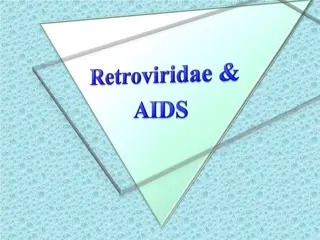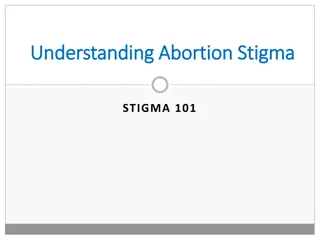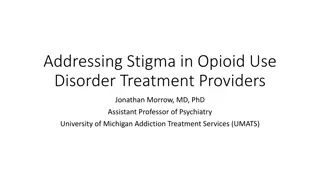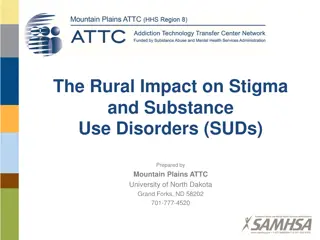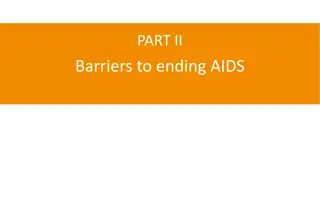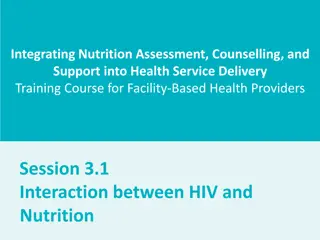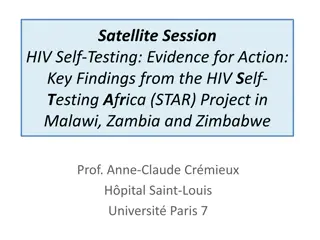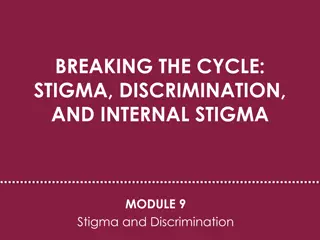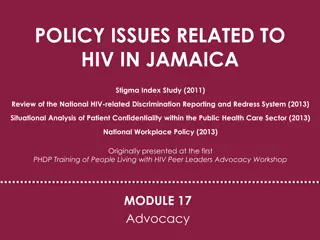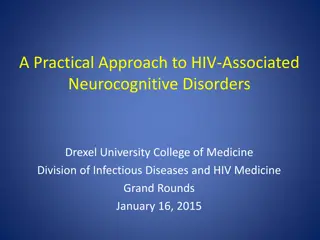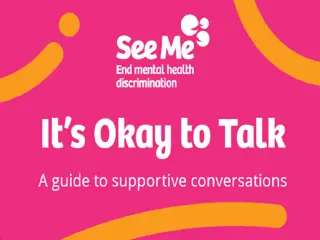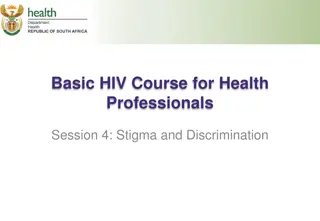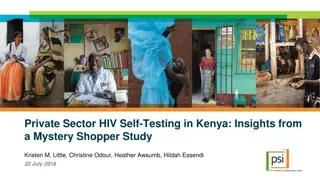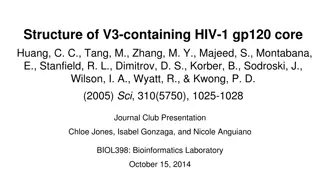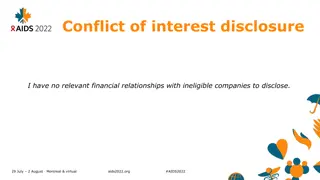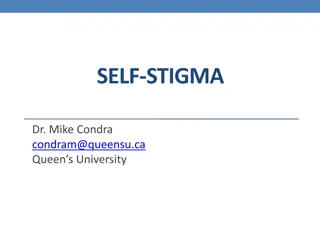Understanding Self-Stigma in HIV: Causes and Impacts
Self-stigma in the context of HIV involves negative beliefs, thoughts, and behaviors that can lead to shame, guilt, and self-rejection. This article explores the cycle of self-stigma, differences between stigma and discrimination, causes of self-stigma, and its impact on individuals. Addressing internal stigma is crucial for promoting mental well-being and social acceptance among people living with HIV.
Download Presentation

Please find below an Image/Link to download the presentation.
The content on the website is provided AS IS for your information and personal use only. It may not be sold, licensed, or shared on other websites without obtaining consent from the author. Download presentation by click this link. If you encounter any issues during the download, it is possible that the publisher has removed the file from their server.
E N D
Presentation Transcript
The Face in the Mirror Addressing internal stigma
Addressing internal stigma Shaun Mellors Director of Programmes & Technical Positive Action, ViiV Healthcare Conflict: Employee of ViiV Healthcare (Conference Sponsor). This presentation represents my own personal views and experiences and work done with Beyond Stigma
What is self-stigma? Self-stigma is a mindset of negative beliefs, thoughts and behaviours and can manifest as shame, guilt, self-loathing and self-rejection and in the context of HIV these negative beliefs, feelings and actions
The cycle of self-stigma Beliefs and thoughts. I have negative thoughts that I am to blame for my HIV, that I deserve HIV Withdraw socially, ambitions and plans are unimportant and I limit self care Feeling ashamed, feeling guilty and afraid of judgement
What is the difference between stigma and discrimination? Stigma: When you think negative things about me because of my HIV status Stigma is a thought whilst discrimination is an action. Self-Stigma: When I think or say negative things about myself because of my HIV status Discrimination: When you do negative things to me because of my HIV status Source: Inside Out From the Inside Out: Dealing with TB-related Self-stigma and Shame A toolkit for people with TB to deal with self-stigma and shame - http://www.beyondstigma.org/resources.html
WHAT CAUSES SELF-STIGMA? Economics, culture, politics Access to care services Community support networks Sources of information Levels of stigma and discrimination The Self Self- Stigma Society Context Source: www.beyondstigma.org Ferris-France, N., S. H. McDonald, R. R. Conroy, E. Byrne, C. Mallouris, I. Hodgson, and F. N. Larkan. 2015. An Unspoken World of Unspoken Things: A Study Identifying and Exploring Core Beliefs Underlying Self-Stigma among People Living with HIV and AIDS in Ireland. Swiss Medical Weekly 145: w14113.
WHAT CAUSES SELF-STIGMA? Economics, culture, politics Belief or meaning systems; mood states (e.g. depression, anxiety); coping skills and resilience; levels of knowledge; life experience and life skills; Self esteem and self awareness; sexuality and disclosure of status Access to care services Community support networks The Self Sources of information Levels of stigma and discrimination Economics, culture, politics; access to care services; community support networks; sources of information; levels of stigma and discrimination Society The individual s circumstances and conditions; use of drugs or alcohol; childhood sexual abuse; power relationships; living conditions; time since diagnosis; family circumstances Context Source: www.beyondstigma.org Ferris-France, N., S. H. McDonald, R. R. Conroy, E. Byrne, C. Mallouris, I. Hodgson, and F. N. Larkan. 2015. An Unspoken World of Unspoken Things: A Study Identifying and Exploring Core Beliefs Underlying Self-Stigma among People Living with HIV and AIDS in Ireland. Swiss Medical Weekly 145: w14113.
What works and what does not work in addressing self- stigma Interventions that resulted in consistent self-stigma reductions were: ART provision including treatment literacy; Social empowerment; Economic empowerment and strengthening; Cognitive-behavioural therapy Interventions with null effects on self-stigma were: Health awareness raising; Stigma coping and behaviour change (although they were effective for other outcomes just not self-stigma). Source: Management of a spoiled identity : systematic review of interventions to address self-stigma among people living with and affected by HIV - Pantelic M, Steinert JI, Park J, et al. BMJ Glob Health 2019;4:e001285. doi:10.1136/ bmjgh-2018-001285 10
Recommendations Differentiate between HIV stigma and HIV discrimination unless explicitly wanting to address the resulting discrimination. Move away from using the term self-stigma and focus on self-worth Target interventions or funding on a combination of structural- level and individual-level risks and resilience the hold promise for addressing self-worth . Measure, measure, measure and share what works and what does not.
Thank you Special thanks to Nadine and Positive Action team members who contuinue to challenge my thinking and who also reviewed the presentation




